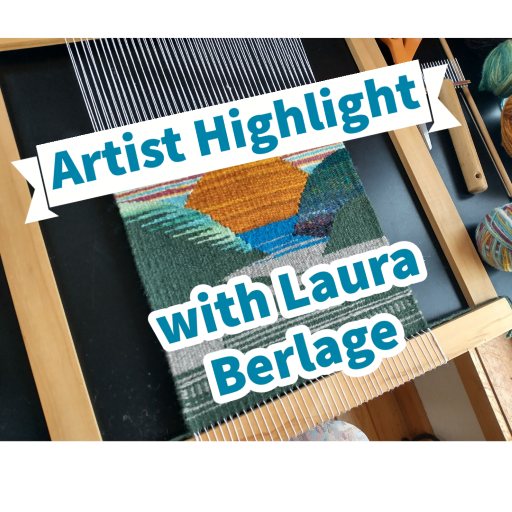Artist Highlight with Laura Berlage

How did you first become interested in fiber art?
I’ve always been a very creative spirit—drawing incessantly as a child, making up stories, turning ideas into form. I was fortunate to grow up in a home where textile traditions were still passed from mother to daughter, from sewing to embroidery and beyond. My mom first put a crochet hook in my hand when I was about eight years old, so I could create colorful things for my stuffed animals to wear. The magic of turning something as simple and everyday as yarn into a complex, three-dimension object I have in my mind never fades for me, and that has grown and blossomed in so many different ways in my art practice. Weaving did not run in the family, however, and that journey began when I was a 13-year-old homeschooler. A class through an area technical college’s enrichment course in Navajo tapestry weaving with Fran Potter opened up a whole new world of community and creative expression for me, and it changed my life. Tapestry weaving, as well as many other forms of fiber arts, continues to be an integral part of who I am as a creative. It followed me through my MFA in Interdisciplinary Arts from Goddard College, and now it is an exciting part of my teaching practice.
How would you describe the artwork that you create for someone who isn’t familiar with what you do?
There is always a story. The pieces invite you into that story—whether it be as small as a needle felted loon that fits in the palm of your hand or as expansive as a tapestry that took seven years to make. The story might be in the materials like wool from my farm’s sheep here in northern Wisconsin, intertwined in our sustainably minded agrarian practices, or it might be how a piece is in conversation with historical works or the overlay of cultures. Nature runs through it, whether wild or domestic, infused with a love for the creatures and plants of this region. There is also a distinctive set of colors (I call it the “Erindale” palate, in honor of my studio name Erindale Tapestry Studio), that is a mix between watercolors and medieval tapestry in nature. This draws the body of work together, even when the individual pieces are engaged in very different aesthetic conversations.
What role does the family farm play in your artwork?
Cultivating my own raw materials is a very exciting part of what I do as a fiber artist. While my sister Kara is the shepherdess, after shearing day in springtime the 600 to 800 pounds of wool becomes my working materials. I hand skirt each fleece and prepare it for the woolen mill, working closely with the owner for roving and yarn specifications as well as the dying process. Katherine, the mill owner, is a dye artist, and together we’ve created much of what has become the Erindale palate. It’s like Christmas when the finished wool comes back, ready to be woven, felted, crocheted, and so much more! Human-scale, sustainable farming is also very grounding in the rhythms and wisdom of nature and stewardship, which weaves itself into the inspiration and stories for my pieces.
Can you talk about the importance of creating work with your hands? Why is that so important these days?
While so much of our world has become digital (especially since the pandemic), our physical beings still inhabit an analog experience. Handwork gives us a break from the fast-paced, instant gratification situation of the online world and helps us reground in a slower, more meditative state. Weaving, felting, crochet, stitching—fiber arts offer a way to sink into a process that is visual, textural, and kinesthetic. It helps us to think in three dimension, to finesse fine motor skills, to learn the process of transforming an idea into form, and to cultivate patience. There is also the deep sense of agency and empowerment that comes from making something yourself, with your own hands, using simple tools and everyday materials. It connects us with the work of our ancestors and our shared story of survival and creativity.
How does your love of history factor into your artwork? Do you find yourself influenced by certain historical periods?
When I was about 9 years old, our Montessori school paid a visit to Old World Wisconsin, a living history museum. It struck me in that moment how we are actually all the same people, with the same desires and longings and struggles, just with different situations. That way of looking through time has stuck with me, whether aimed at the pioneer days, the American Civil War, or other eras. I like to say that as a teenager I got into the Middle Ages and never quite got back out again! There’s 1000 years of change and culture and art and literature there—so plenty of room for exploration! It is also a time when all the classes were working in close proximity, the vast majority of the population worked the land by hand (in many ways much like we still do on our family farm today), and the disruptions of industrialization had not yet taken hold. My art has a way of speaking to that experience as well as bridging in the potential for alternative narrative with feminist sensibilities. My work seeks to humanize (rather than romanticize) our relationship with history and culture, that we might not only learn the lessons but also see that the lines we use to divide ourselves from one another are really quite fragile and mutable.
Do you have any advice for people who want to become more involved in fiber arts?
Be diverse in your practice. Put your fingers in many pots. Start lots of projects. Buy materials that bring you delight without knowing how you’ll use them yet (yarn never outdates). Be adventurous, take lots of classes, draw ideas and capture them in a notebook (or shelf of notebooks as needed). Fiber arts can be as simple or as complex as you feel led to take it. Dive in with color theory, learn about what materials are made from and how they interact with each other, and meet some sheep or alpacas or angora rabbits. Wear the things you make or hang them on the wall, even if they are imperfect, and spontaneously ask folks “did you make that?” if it looks like they are wearing or holding something handmade. The joy they exude when they say yes and tell you the piece’s story will in turn be your joy. Learn how to listen and watch carefully with mentors. Fiber arts is a living tradition—like a tactile form of oral tradition—that continues to exist because there are people who continue to create using its methodologies. Collectively, we keep these traditions and hand-skills alive. In the face of industrialized textile production, handmaking in fiber arts pushes back against this dehumanizing process and reaffirms the validity of human-scale making. I also hope that, as makers, we can see that the deep human desire to create art is not specific to medium and methodology, and that fiber as an art form is as respectable a pursuit as other fields in the arts. Art is deeply rooted in expressive intent, rather than the materials used to actualized that intent. If the medium of fiber speaks to you, then by all means jump in with all your heart and see where the adventure takes you.
